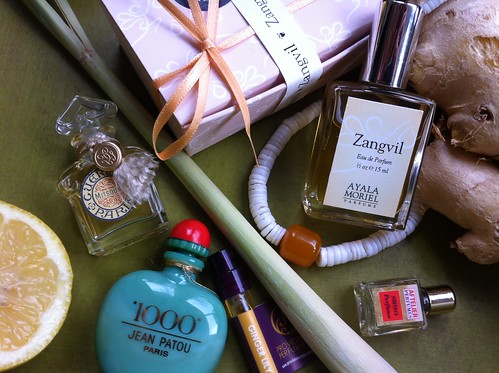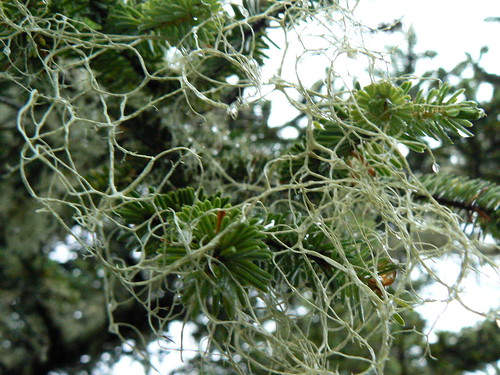Sick & Chic
Of course this is not an easy task when you’re as sick as a dog and can’t even get out of bed. And I don't know that it would be effective or relevant for someone suffering from a serious condition. Nevertheless, just like in healthy living - it’s those little details that make the not-quite-pleasant experience just a little more bearable and ever so slightly less depressing.
Instead of drowning in used tissue, surrounded by empty mugs and 80’s workout attire (I'll be the first to admit that the ugliest clothing tend to be the most comfortable) -- bring out your finest china to drink that medicinal brew, your coziest sweater (or sweater dress), up-cycled cashmere underwear and mukluks and try to be a little bit more glamorously ill... I guarantee it will lift your spirits up. At least a little. And after the spirit, the body will follow - slowly but surely.
While we’re speaking of brews to ward off those flu bugs and chase away the chills: not all medicine tastes awful. Here are a few examples that are easy to brew even if you don’t have a personal nurse or a cook at your disposal. The key is to keep the body warm and hydrated, so it can flush out the toxins and whatever else it's fighting with... So as long as it's not coffee and alcohol - you'll probably benefit from a hot tea or tisane. But some are, of course, more effective:
Fir needle tip tea, which was the aboriginal’s only source of vitamin C throughout the winter months. It has a delicate citrus taste, reminiscent of mandarin oranges. Harvest the new growth needles in the springtime and dry for later use; or purchase from Juniper Ridge.
Another wonderful source of vitamin C is hibiscus flower tea (aka Jamaica), Besides, its ruby-red jewel tones are another reason to bring a smile to one's face. Brew it alone or throw in a few slices of fresh ginger or even a few blueberries (frozen will do) to enhance the flavour and amp up the medicinal properties (ginger is a great warming and anti-microbial brew that's wonderful for chest colds).
If hot water and lemon is your thing, why not spice it up a bit with Bittered Sling Lem-Marrakech? Reminiscent of Moroccan pickled lemon and cardamom, it's sure to add some intrigue to your run of the mill lemon and hot water remedy. Besides, it's got the beneficial "side effects" of relieving fever.
Ginger, lemon and honey is my long-time go-to whenever I have a cold. It seems to take care of it all - vitamin C, soothing the throat, aiding digestion and warming up the body. Honey also helps the immune system fight foreign invaders, and the whole thing just tastes great, in my humble opinion. Simply slice about a thumb-length of fresh ginger root, top with hot water, add a teaspoon of local unpasteurized honey - and squeeze as much lemon as you can take (up to 1/2 a lemon, preferably organic). You can also slice 1/2 a lemon instead of squeezing it - and eat the entire thing once you finished the brew. It's actually the white pith that contains the most vitamin C in the citrus...

Feeling extra glamorous - and your nose is not 100% plugged and useless? A little perfume won't hurt to lift up your spirits. This is the time for those otherwise in-your-face spicy orientals: they won't feel nearly as overpowering as before (though you still should be careful of overdosing, in case you are surrounded by humans whose noses are not as plugged as yours). Opium, Tabu, Youth Dew - the time is now! And what with their slightly medicinal air of all those oriental spices and patchouli, medicine chests and the Chinese clinic are not an unpleasant association.
Not surprisingly, I'm partial to my Zangvil, which I created exactly when I was feeling cold and sick. It never fails from bringing that feeling of coziness and well-being and just warms me up, with magnolia lily, ginger lily and ginger.
Speaking of ginger lily - it is a rather unusual note that shares some characteristics with ginger root: effervescence, complexity, warmth and sensuality. It started showing up in perfumes such as Dark Amber & Ginger Lily, where it disappears in a blink of an eye and gives way to sheer amber and woodsy musks. In Providence Perfume Co's Ginger Lily, this note is paired with rather bold spices - clove and cinnamon - to create a modern spicy oriental that is all-natural and seductive. But also perfect for those under-the-weather days, when you're not sure if you want a medicine or a perfume.
If your cold has reached the point of needing to steam with eucalyptus or camphor - try a dab of 1000 by Patou, or better yet - Shiso by Aftelier will make you feel glamorous about it. After all, borneol camphor is what the geishas used to scent their kimonos with; and their milky white skins were adorned with a powdered form of incense containing camphor, cassia, sandalwood, agarwood and other sweet spices and herbs.
Chinatown is one of those powerhouse modern fruity chypres, where more is less (so you might not be as overwhelmed by it when you have a cold!). It also has an unusual concoction of spicy medicinal notes reminiscent of the TCM's clinic, where powdered Don Quai permeates the air, numbing pain an bringing up memories - alongside many other sickeningly bitter herbs.
Mitsouko is another go-to-favourite when things don't go quite so well. It has proven to withstand the test of time (read: bad memories) and even though I was wearing it during a very traumatic time when my daughter was hospitalized - I still enjoy it very much. It's one of those friends that will never leave you, even when all hell breaks lose. It's that good. Besides, it is so perfectly balanced - dry yet sweet, fruity yet spicy, warm yet clean and elegant - that it never fails.
And if nothing at all seems to satisfy you - you can make an aromatherapeutic diffuser blend to keep all those winter bugs at bay, clearing your space while infusing it with a lovely, refreshing smell. You may also use 10-20 drops of this blend in a bath:
20 drops Eucalyptus oil
20 drops Lemon oil
10 drops Ginger oil
10 drops Thyme, Linalool
3 drops Allspice oil
What do you wear when you're feeling ill? Do you just go au-naturelle - or do some scents seem to help you get out of it?






